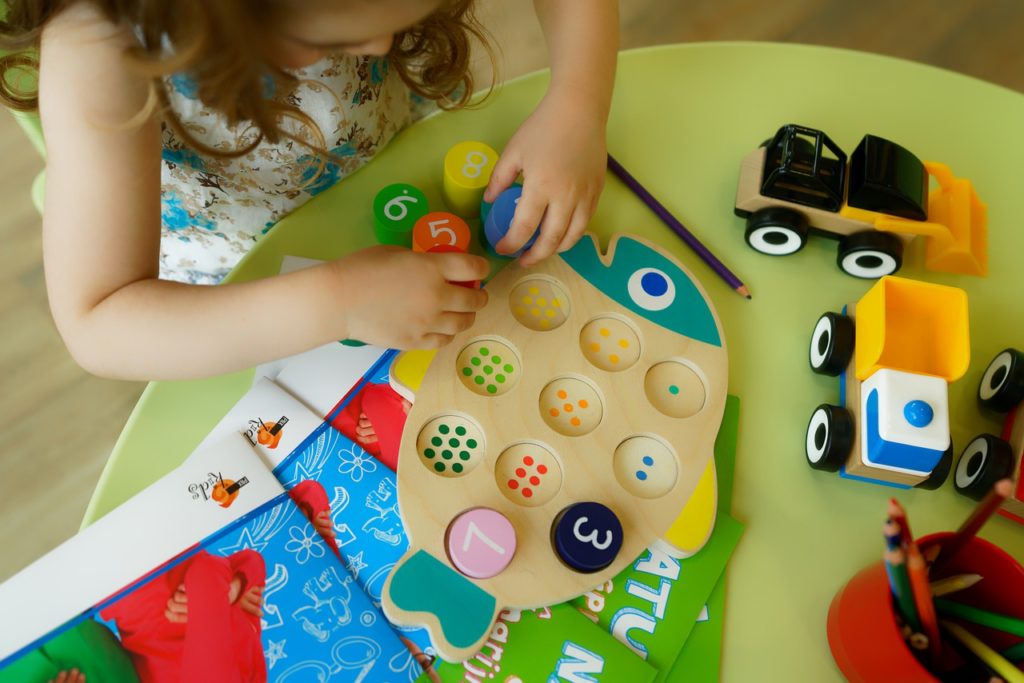Par Charlaine St-Jean, Université du Québec à Rimouski (UQAR); Marilyn Dupuis Brouillette, Université du Québec à Rimouski (UQAR); Naomie Fournier Dubé, Université du Québec à Rimouski (UQAR) et Thomas Rajotte, Université du Québec à Rimouski (UQAR)
Les nouveaux diplômés universitaires en éducation préscolaire et en enseignement primaire sont appelés à enseigner à des enfants âgés entre 4 et 12 ans, soit des tout-petits aux presqu’ados. Ces différences d’âge ont nécessairement un effet sur les pratiques éducatives des enseignants.
Les enseignants peuvent-ils aisément passer d’un niveau à l’autre ? Ce questionnement existe depuis plusieurs années.
Au Québec, les enseignants doivent détenir un brevet d’enseignement à la suite de l’obtention d’un baccalauréat universitaire d’une durée de quatre années. Leur formation initiale (un baccalauréat en éducation préscolaire et en enseignement primaire) englobe donc le préscolaire et le primaire. À la fin de son baccalauréat, un étudiant peut enseigner l’un ou l’autre niveau. Toutefois, l’expérience qu’il aura au cours de ses premiers contrats sera déterminante. La spécialisation amène donc des pratiques différentes, malgré un baccalauréat commun.
Nous avons d’abord été enseignant et enseignantes au niveau primaire. Puis nous sommes devenus professeurs d’université en enseignement et en didactique, avec une sensibilité pour l’éducation préscolaire. Ces deux chapeaux nous permettent donc d’analyser les différences dans les pratiques.
L’approche développementale
L’éducation préscolaire se distingue de l’enseignement primaire dans la mesure où elle a non seulement une visée éducative, voire d’instruction, mais d’abord et avant tout une visée de socialisation.
Cela se concrétise notamment avec l’approche développementale qui est prônée par le programme-cycle de l’éducation préscolaire. En effet, la classe de maternelle est généralement conçue comme une transition et un premier pas dans le parcours d’instruction. Elle permet à l’enfant de socialiser, de prendre goût à l’école et de s’épanouir avant son arrivée à l’enseignement primaire où les exigences disciplinaires ont une place plus importante dans le programme de formation.
Cette approche développementale « vise le développement global de l’enfant, dans le respect de son rythme, de ses besoins et de ses intérêts. Elle préconise l’intégration d’activités initiées par l’enfant, tels le jeu et l’exploration », écrivent Krasimira Marinova et Roxane Drainville. Ces deux chercheuses québécoises se sont intéressées à la pression que peuvent ressentir certains enseignants à avoir recours aux pratiques scolarisantes lors des apprentissages du langage écrit au préscolaire.
Cette approche développementale est centrale dans la philosophie de la maternelle. Elle guide toutes les interventions de l’enseignant et met de l’avant la place de l’enfant comme acteur principal de ses apprentissages.
Elle met l’accent sur l’initiative de l’élève et ses apprentissages, tout en restant accompagné par l’enseignant. Par exemple, lors du retour en classe, l’enseignant écoute les élèves s’interroger sur le rang. Pourquoi un tel élève est devant un autre ? L’enseignant peut prendre ce questionnement au bond afin d’amener la notion de la mesure et comparer la grandeur des élèves en les positionnant dos à dos ou selon un autre processus. L’apprentissage est ici basé sur les intérêts des enfants et selon leurs propres initiatives, tout cela avec l’accompagnement de l’enseignant.
En réalité, il n’y a pas d’enseignement lié à un savoir spécifique qui devrait se faire à l’éducation préscolaire. Ni de par cœur. Par exemple, un enseignant peut demander : « est-ce possible ou impossible que tu aies une banane pour ta collation ce matin ? » avec les enfants lors de la causerie, afin d’éveiller leur pensée probabiliste. Toutefois, ce n’est pas comme enseigner les probabilités avec des attentes précises quant aux compétences à développer par les élèves (comme c’est le cas au primaire).
Dans le cadre de la maternelle, les savoirs et les concepts mathématiques sont présents, il n’y a pas de doutes, mais l’apprentissage se fait davantage en contexte de jeu. Les attentes varient d’un enfant à un autre.
L’enjeu qui nous préoccupe ici est la coexistence des pratiques dites « développementales » face à celles dites « scolarisantes » qui sont incohérentes.
Les pratiques scolarisantes
Les pratiques « scolarisantes » se situent en effet à l’opposé. Elles visent la transmission de certains savoirs ou compétences clés pour les apprentissages, dans ce cas-ci au primaire. Le rôle de l’enseignant est tout autre : diriger au lieu d’accompagner. Une posture qui fait abstraction d’une majorité des initiatives des enfants.
Prenons l’exemple d’une enseignante qui organise une activité d’enseignement lors de la plantation des graines de tournesol. Elle va donner étapes par étapes ce que les élèves doivent faire. L’approche scolarisante préconise des activités variées et dirigées par l’enseignante. Finalement, cette approche a le rôle de guider les enfants vers des apprentissages prédéfinis ».
Alors quelles sont les approches à préconiser ? Y’a-t-il des directions pédagogiques que les enseignants pourraient mettre en pratique du préscolaire jusqu’à la fin du primaire ?
L’apprentissage par exploration
L’apprentissage par exploration donne une place centrale à l’apprenant (que ce soit l’enfant du préscolaire ou même l’étudiant universitaire), sachant qu’il doit être actif et engagé dans ses apprentissages. Il est pertinent parce qu’il est cohérent avec l’approche développementale et ne s’inscrit pas dans une approche scolarisante.
L’apprentissage par exploration s’oriente vers la construction active des savoirs par les élèves. La réflexion, la recherche et le développement de la pensée par les élèves favorisent la création de nouvelles connaissances. À ce titre, le rôle de l’enfant est absolument central dans le développement de sa pensée.
Lors d’une situation d’apprentissage qui prône l’apprentissage par exploration, les initiatives des élèves sont le moteur de leurs apprentissages, tout comme les différentes expériences qui sont essentielles au développement de leur pensée et à leur compréhension des savoirs. Le fait de manipuler et de se faire questionner favorise sa compréhension. De plus, le rythme de l’enfant est respecté. En effet, c’est l’enfant qui explore la situation problème, réfléchit et tente d’y répondre : l’enseignant ne dicte pas le rythme des apprentissages.
Les rôles de l’enseignant dans l’apprentissage par exploration
En utilisant l’apprentissage par exploration dans sa pratique, l’enseignant voit son rôle comme celui d’accompagnateur. Ainsi, les activités sont planifiées et pilotées par l’enseignant en tenant compte des intérêts, des besoins et du rythme des élèves.
Certaines balises de l’activité peuvent être planifiées, mais l’enseignant les adapte à la situation et aux besoins de son groupe. Sa place est toute autre que dans une approche scolarisante.
Il soutient les efforts des enfants, les observe, les accompagne et les interroge pendant qu’ils sont en action. Il favorise les échanges. L’élève dispose de beaucoup de latitude puisqu’on lui permet de se questionner, de réfléchir, de prendre des initiatives : il est responsable de ses apprentissages. Cela demande une grande part de compétence de la part de l’enseignant puisqu’il doit être prêt à répondre rapidement aux besoins des élèves.
Est-ce que l’apprentissage par exploration dans les classes du préscolaire pourraient se retrouver au primaire ? N’est-ce pas le rôle fondamental de l’enseignant, d’observer, d’accompagner et de questionner des élèves qui prennent des initiatives, font des expériences et tout cela selon leur propre rythme ?
La construction active des savoirs par les élèves est un incontournable pour les enseignants. Il s’agit de ne pas recevoir des connaissances passivement afin de pousser la réflexion tout en favorisant la création de nouvelles connaissances. Il reste ainsi à se demander comment trouver le juste milieu entre accompagner et guider l’élève tout en lui permettant de construire ses apprentissages.
Par Charlaine St-Jean, Professeure à l’éducation préscolaire, Université du Québec à Rimouski (UQAR); Marilyn Dupuis Brouillette, Professeure, Université du Québec à Rimouski (UQAR); Naomie Fournier Dubé, , Université du Québec à Rimouski (UQAR) et Thomas Rajotte, Professeur en didactique et orthopédagogie des mathématiques, Université du Québec à Rimouski (UQAR)
Cet article est republié à partir de The Conversation sous licence Creative Commons. Lire l’article original.






